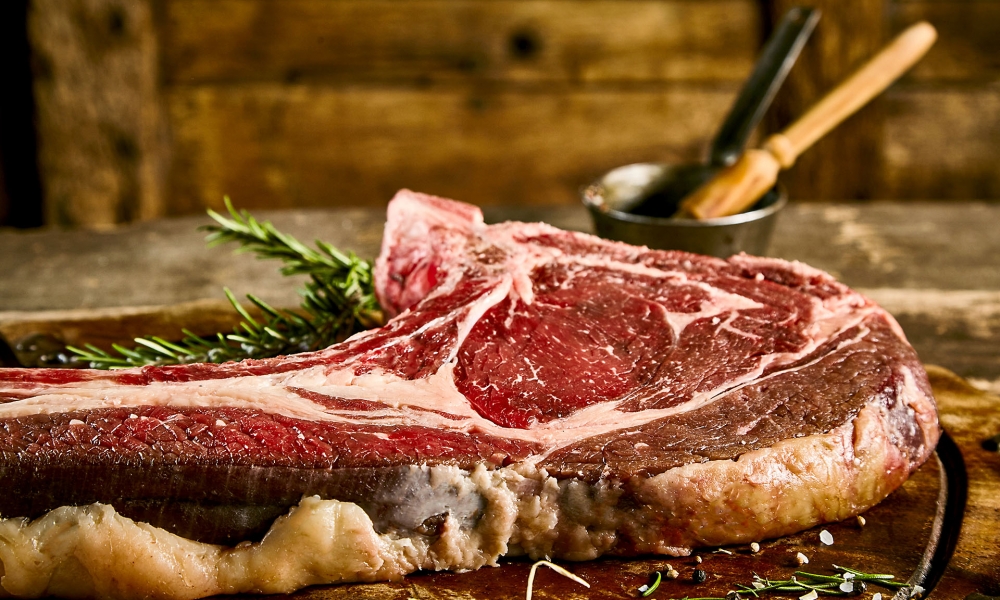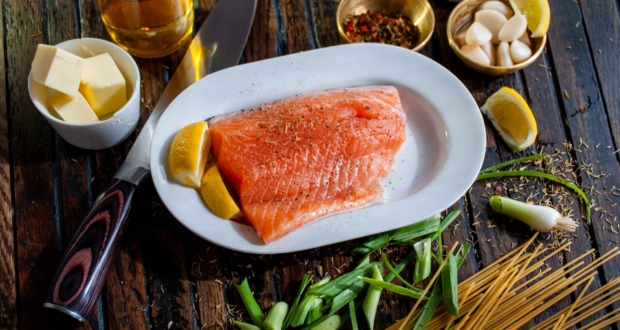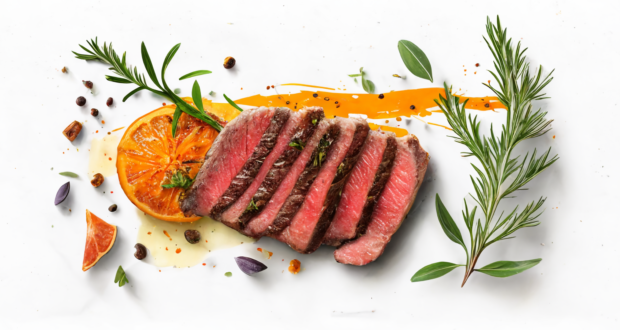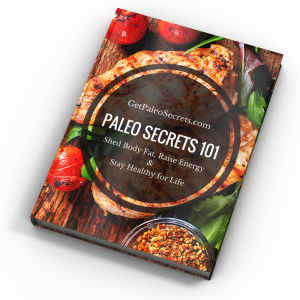The paleo diet has become a popular and widely-followed way of eating in recent years, with many proponents touting its potential health benefits. But where did this dietary trend originate, and how has it evolved over time?
The history of the paleo diet is a fascinating journey through human evolution and the way our ancestors ate. By examining the origins and evolution of the paleo movement, we can gain a deeper understanding of this dietary approach and its potential benefits for our health and well-being.
As Dr. Loren Cordain, the founder of the paleo movement, notes: “Our genes have changed very little over the past 40,000 years, and therefore, our nutritional requirements have remained the same.” With this in mind, let’s take a closer look at the history of the paleo diet, from its early origins to its current status as a popular and widely-practiced way of eating.
The paleo diet has become an increasingly popular eating plan in recent years. It is based on the idea that we should eat like our prehistoric ancestors did, focusing on natural, whole foods and avoiding processed and refined foods. But where did this idea come from, and how has the paleo movement evolved over time?
In this article, we will explore the history of the paleo diet, from its early origins to the present day, to better understand this eating plan and its place in the world of nutrition.
The Origins of the Paleo Diet: Tracing the Evolution of a Popular Nutritional Movement
As people continue to search for ways to improve their health and well-being, many have turned to the paleo diet as a potential solution. The paleo diet, also known as the caveman diet or ancestral diet, is based on the idea that humans should eat foods similar to those eaten by our Paleolithic ancestors. But where did this idea come from, and what is the scientific evidence behind it? In this article, we will explore the history of the paleo diet and how it has evolved over time.
The Ancestral Diet and Early Human Eating Habits
To understand the origins of the paleo diet, we must first examine the diet of early humans. For millions of years, humans lived as hunter-gatherers, subsisting on the plants and animals available in their local environments. This varied widely depending on geographic location, climate, and season, but early humans typically consumed a diet rich in protein, fiber, and healthy fats.
According to Loren Cordain, one of the leading proponents of the paleo diet, “The ancestral human diet was composed of wild plants and animals and marine life that were free of added salt, sugar, and other unnatural additives.” The emphasis on whole, unprocessed foods is a key principle of the paleo diet, and proponents argue that this is the key to better health and nutrition.
The Concept of “Paleolithic Nutrition” and its Emergence in the 1970s
While the idea of an ancestral diet has been around for centuries, it wasn’t until the 1970s that the concept of “paleolithic nutrition” began to gain traction. This idea was popularized by a number of scientists and researchers who were interested in the diets of our Paleolithic ancestors and how they may have influenced our modern health.
One of the key figures in this movement was Dr. Boyd Eaton, a professor of anthropology at Emory University. Eaton and his colleagues argued that humans are best adapted to the foods that our Paleolithic ancestors consumed, and that modern diets rich in processed foods and refined carbohydrates are contributing to a wide range of health problems, including obesity, heart disease, and diabetes.
The Role of Dr. Walter L. Voegtlin in Popularizing the Idea of a Paleo Diet
While Eaton and his colleagues helped to lay the foundation for the paleo diet, it was Dr. Walter L. Voegtlin who really popularized the idea in the 1970s and 1980s. Voegtlin, a gastroenterologist, argued that humans are not well adapted to grains, dairy products, and other modern foods, and that a diet based on lean meat, fish, and vegetables is the best way to promote health and prevent disease.
In his book “The Stone Age Diet,” Voegtlin wrote that “our nutritional requirements were established in the Stone Age,” and that modern humans should avoid “the foods of civilization.” While the scientific evidence to support many of Voegtlin’s claims is limited, his book helped to spark a renewed interest in the idea of an ancestral diet.
The Evolution of the Paleo Diet: From Niche Concept to Popular Movement
The paleo diet, also known as the caveman or ancestral diet, has become a popular dietary trend in recent years. But how did this dietary philosophy develop and evolve into the movement that it is today? In this article, we will explore the history of the paleo diet, its growth into a popular movement, and the key figures and events that shaped its evolution.
The development of the paleo diet into a popular movement in the 2000s
The roots of the paleo diet can be traced back to the 1970s when researchers first began exploring the idea of Paleolithic nutrition. However, it wasn’t until the early 2000s that the paleo diet began to gain popularity among the general public. This was in part due to the efforts of a small group of enthusiasts and experts who began to promote the diet through online forums and social media.
The influence of Loren Cordain and his book “The Paleo Diet”
One of the most significant figures in the rise of the paleo diet was Dr. Loren Cordain. An exercise physiologist and professor at Colorado State University, Cordain is widely credited with popularizing the paleo diet through his research and his 2002 book, “The Paleo Diet.” In the book, Cordain argued that our modern diet, with its reliance on processed foods, is at the root of many of the health problems that plague modern society. He advocated for a return to the foods that our ancient ancestors would have eaten, such as lean meats, fruits, and vegetables.
Cordain’s book became a bestseller, and he became a leading figure in the paleo movement. He continued to promote the diet through additional books and appearances on television and in the media.
The rise of online communities and social media in spreading the paleo movement
The growth of the paleo movement can also be attributed to the rise of online communities and social media. As more people began to adopt the diet, online forums and social media platforms like Facebook and Twitter provided a way for people to connect with one another, share recipes and tips, and support each other on their paleo journeys. Today, there are numerous paleo blogs, podcasts, and online communities that provide resources and support for those following the diet.
The paleo diet has come a long way since its early days as a niche concept in the world of nutrition. Today, it is a popular movement that has influenced the way many people approach their diets and their health. Whether you are new to the paleo diet or a longtime follower, it is important to understand the evolution of this movement and the key figures and events that shaped it. By understanding the history of the paleo diet, we can better appreciate its principles and continue to evolve and refine our approach to healthy eating.
The Controversies Surrounding the Paleo Diet
The paleo diet has been a popular nutrition trend in recent years, with many enthusiasts claiming it can improve health and even prevent chronic diseases. However, as with any dietary approach, the paleo diet is not without its controversies. In this article, we will explore some of the criticisms, debates, and alternative approaches to the paleo diet.
Criticisms of the paleo diet from nutritionists and medical professionals
One of the main criticisms of the paleo diet is that it is not based on sound scientific evidence. Many nutritionists and medical professionals argue that the paleo diet is overly restrictive and may result in nutrient deficiencies if not carefully planned. Additionally, some experts claim that the diet’s emphasis on animal protein and fat may increase the risk of heart disease and other health problems.
According to a 2014 article in the Journal of the Academy of Nutrition and Dietetics, “The Paleo diet lacks several essential nutrients, including calcium, fiber, and vitamin D, and it may also be too high in protein and saturated fat, which could increase the risk of chronic disease.”
Debates around the accuracy and feasibility of recreating a true paleo diet in modern times
Another controversy surrounding the paleo diet is the debate around how accurately it can be recreated in modern times. Some critics argue that the foods we have access to today are vastly different from those available to our Paleolithic ancestors. For example, modern fruits and vegetables have been selectively bred over centuries to increase their size and sweetness, while domesticated animals have been fed and bred for maximum meat and milk production.
In an interview with NPR, Marlene Zuk, a professor of ecology, evolution, and behavior at the University of Minnesota, argued that “Our Paleolithic ancestors didn’t eat things like quinoa, for example. They didn’t eat kale. They didn’t eat avocados, even though they’re delicious.” Zuk suggests that our ancestors’ diets were much more diverse and varied than the modern paleo diet allows.
Alternative approaches to paleo-style eating, such as the primal diet and the ketogenic diet
While some critics of the paleo diet reject it entirely, others have proposed alternative approaches to paleo-style eating that may be more sustainable and balanced. Two of the most popular approaches are the primal diet and the ketogenic diet.
The primal diet is similar to the paleo diet, but with a greater emphasis on whole, nutrient-dense foods and less emphasis on meat and animal fats. The primal diet also allows for some modern foods, such as high-fat dairy products and certain legumes.
The ketogenic diet, on the other hand, is a high-fat, low-carbohydrate diet that has been used for decades to treat epilepsy and other neurological disorders. While not strictly paleo, the ketogenic diet does emphasize whole, unprocessed foods and limits the intake of sugar and refined carbohydrates.
The Potential Benefits of the Paleo Diet
The paleo diet, also known as the caveman diet or the ancestral diet, is based on the idea that the human body is best adapted to the diet of our ancient ancestors. This diet emphasizes whole, unprocessed foods such as meat, fish, vegetables, and fruits, while avoiding grains, legumes, dairy, and processed foods. While the paleo diet has its fair share of critics, there is also evidence that this way of eating can offer potential benefits to our health and wellbeing. In this article, we will explore the potential benefits of the paleo diet in three key areas: reducing inflammation, preventing chronic diseases, and improving athletic performance.
Reducing Inflammation
Inflammation is a natural response of the body to injury, infection, or other stresses. However, chronic inflammation is linked to many health problems, including heart disease, diabetes, and cancer. The paleo diet may help to reduce inflammation by promoting the consumption of whole, nutrient-dense foods that are low in inflammatory compounds. For example, a study published in the European Journal of Clinical Nutrition found that a paleo diet reduced several markers of inflammation in overweight adults. Additionally, the paleo diet emphasizes the consumption of omega-3 fatty acids, which have anti-inflammatory properties.
Preventing Chronic Diseases
The paleo diet may also have the potential to prevent chronic diseases. One of the key principles of the paleo diet is the avoidance of processed foods and added sugars. This can be beneficial in reducing the risk of chronic diseases such as type 2 diabetes, heart disease, and certain cancers. Additionally, the paleo diet emphasizes the consumption of nutrient-dense foods that are high in vitamins and minerals. For example, research suggests that a diet rich in fruits and vegetables may help to reduce the risk of chronic diseases.
Improving Athletic Performance
The paleo diet may also offer potential benefits for athletes and fitness enthusiasts. The diet emphasizes the consumption of high-quality proteins, which are essential for muscle repair and recovery. Additionally, the paleo diet promotes the consumption of carbohydrates from whole food sources such as fruits and vegetables, which can provide the energy needed for exercise. Finally, the paleo diet emphasizes the importance of hydration, which is essential for optimal athletic performance.
While the paleo diet is not without its controversies, there is evidence that this way of eating can offer potential benefits to our health and wellbeing. In this article, we have explored three key areas where the paleo diet may offer potential benefits: reducing inflammation, preventing chronic diseases, and improving athletic performance. However, as with any diet, it is important to consider individual needs and preferences. Before making any significant changes to your diet, it is always a good idea to consult with a healthcare professional or registered dietitian.
The Future of the Paleo Diet: Understanding the Potential of the Movement
The paleo diet has been a popular health and wellness movement for several decades, attracting people from all walks of life who are seeking a healthier, more natural way of eating. Despite controversies and criticisms surrounding the diet, its proponents remain enthusiastic and continue to advocate for its benefits. In this article, we explore the future of the paleo diet, including its potential for continued popularity, the impact of new research and discoveries, and the importance of critical thinking and individualized approaches to diet and nutrition.
The continued popularity of the paleo diet in the health and fitness world
Despite the rise of other diet trends over the years, the paleo diet remains a popular choice for health-conscious individuals. The emphasis on whole, unprocessed foods, and the avoidance of processed and refined products has resonated with many people who are seeking to improve their overall health and wellbeing. The paleo diet also promotes the consumption of healthy fats and protein, which has been shown to have several health benefits.
The potential for new research and discoveries to shape the evolution of the paleo movement
As with any diet, the paleo movement continues to evolve as new research and discoveries emerge. One area of research that is particularly relevant to the paleo diet is the study of ancient human diets. Advances in technology and analytical techniques have allowed researchers to gain a better understanding of what our ancestors ate, and how their diets might have influenced their health.
Another area of research that could impact the paleo movement is the study of the microbiome. Recent research has revealed the important role that gut bacteria play in our overall health, including the regulation of the immune system, the digestion of food, and the synthesis of vitamins and other nutrients. As a result, many paleo advocates are now emphasizing the importance of consuming fermented foods and other sources of probiotics to support a healthy microbiome.
The importance of critical thinking and individualized approaches to diet and nutrition
While the paleo diet has many benefits, it is not a one-size-fits-all solution for everyone. As with any diet, it is important to consider individual needs and circumstances when making dietary choices. Some individuals may have medical conditions or food allergies that require special considerations, while others may have cultural or ethical reasons for avoiding certain foods. It is also important to note that the paleo diet is not a magic cure-all, and that it is still possible to make unhealthy choices even when following a paleo-style diet.
In conclusion, the future of the paleo diet is full of potential. As new research emerges, and the movement continues to evolve, there is much to be learned about the role of diet and nutrition in our overall health and wellbeing. As with any diet, it is important to approach the paleo diet with a critical eye, and to consider individual needs and circumstances when making dietary choices. Ultimately, the paleo diet can be a valuable tool in promoting health and wellness, but it is up to each individual to decide whether it is the right approach for them.







